Introduction
Quality process improvements cannot occur without applying useful tools in an organization (Rocha-Luna, Garza-Reyes, & Kumar, 2013). The tools include:
- Process Mapping;
- Six Sigma;
- Kaizen Tools;
- Force Field Analysis.
Understanding quality improvement processes requires a proper understanding of the available tools and techniques of implementing quality management plans. In this paper, I highlight process mapping tools, six sigma tools, Kaizen tools, and forced field analytical methods as the main tools for quality process improvements.
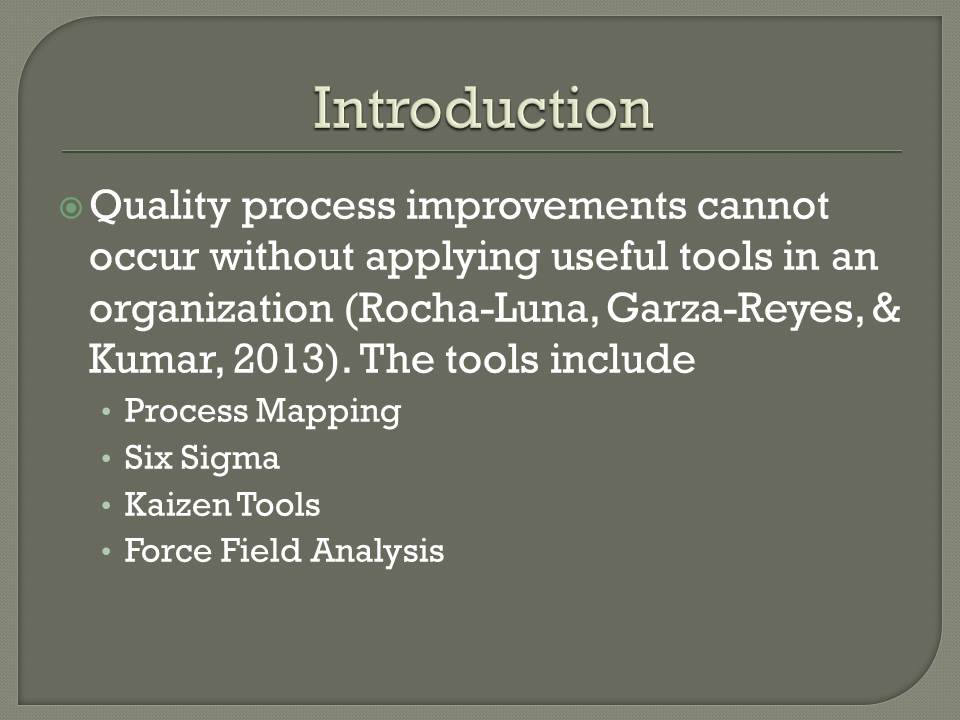
Process Mapping
- This is a tool for analyzing business processes;
- It Breaks down business processes into individual events for easy analysis;
- Involves recording, in the form of a picture, of a business process flow;
- Promotes a better understanding of business processes for purposes of improving business growth (DTI, 2015).
Process mapping tools are useful in the initial stages of quality improvements because they help managers to gather adequate information about a business process for purposes of designing a dynamic model of quality improvement. Through this process, managers could easily understand the activities that take place in a process. In this regard, process mapping emerges as a useful communication tool to help quality improvement teams understand business processes and exploit opportunities for continuous improvement.
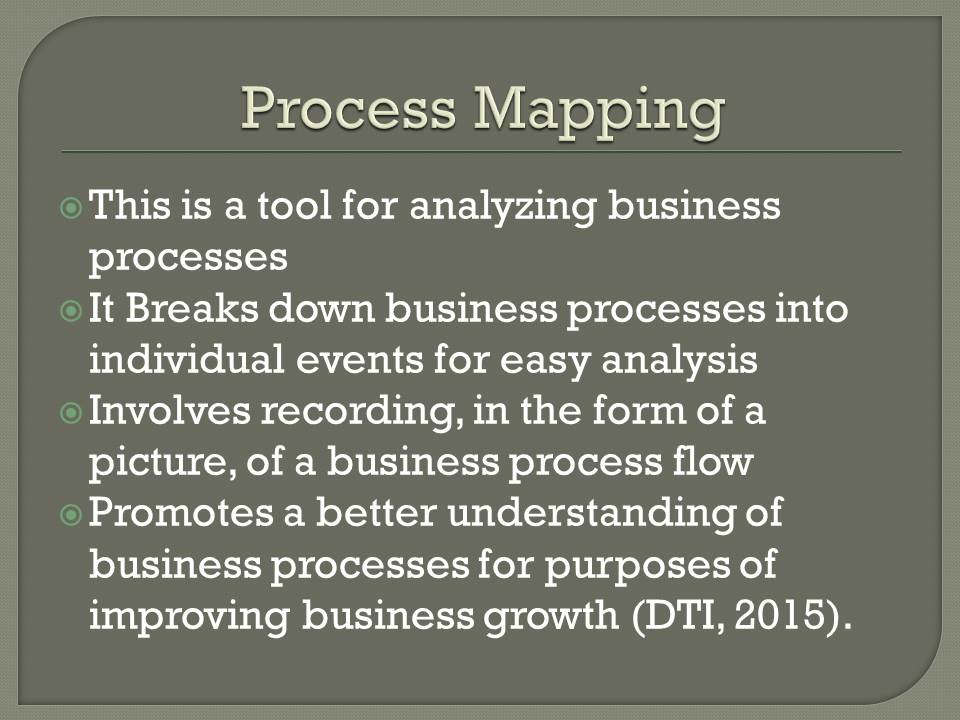
Six Sigma
- The six sigma tool is a measure of quality that strives for near perfection.
- Its disciplined and data-driven approach eliminates defects in business processes (iSixSigma, 2016).
- Its fundamental objective is the implementation of a measurement-based strategy for process improvement (PMV, 2012).
The six sigma model is mostly concerned with delivering quality attributes within a customer’s specification. Opportunities are identified by computing the total quantity of chances for a defect. This tool has helped companies realize improved returns on investments. For example, General Electric has saved more than $10 billion after using this model (iSixSigma, 2016). More companies are using this tool after realizing its potential in quality improvement.
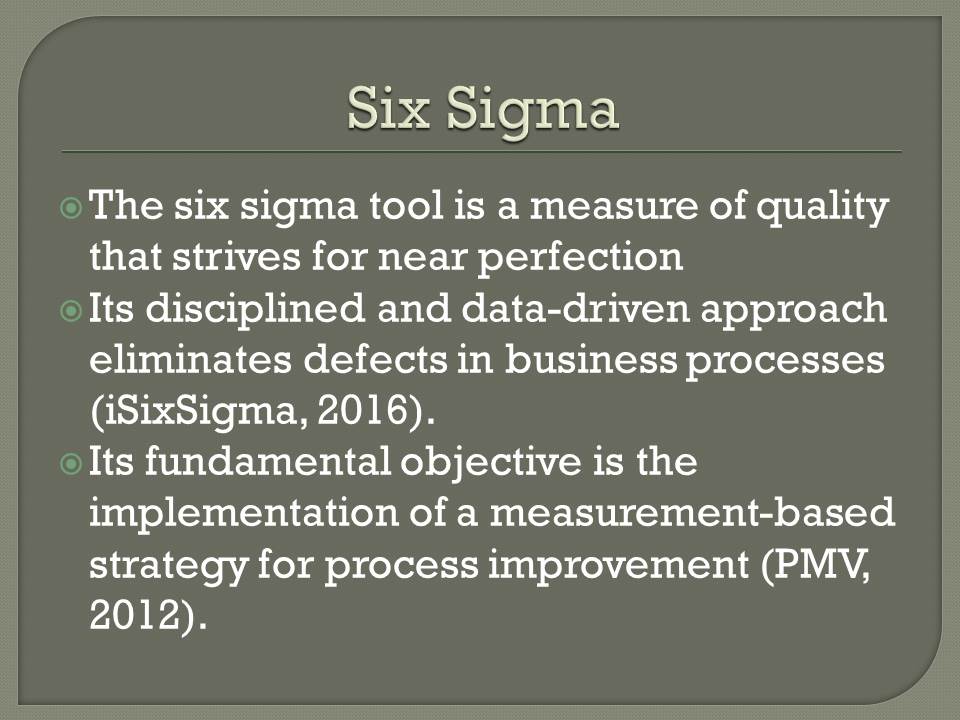
Kaizen Tools
Strives to achieve small incremental changes in quality management to improve a business’s efficiency and quality (PMV, 2012).
Includes four main steps:
- Assessing;
- Planning;
- Implementing;
- Evaluating.
Assigns responsibility to every worker and not just a few people.
It is commonly used in lean manufacturing and lean processing (TechTarget, 2016).
As opposed to other quality improvement tools that I have highlighted in this presentation, Kaizen tools are distinct because of their holistic nature. For example, they do not exempt anyone in the quality improvement process. However, they do not strive to have significant changes in process improvement; instead they strive for small incremental changes in the same. By promoting the standardization of organizational activities, they also strive to minimize waste through the promotion of lean manufacturing. In this regard, this tool is useful for small and large businesses alike.
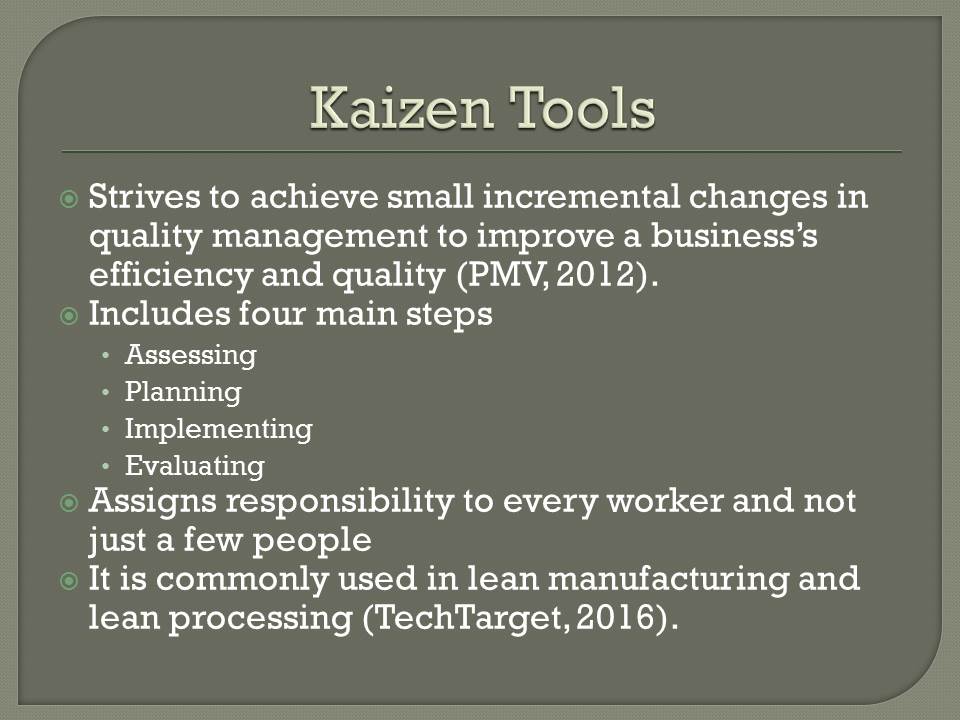
Force Field Analysis
- Identifies forces that may hinder or support the realization of change processes;
- Assesses the forces that hinder continuous improvement;
- Involves the development of plans to overcome obstacles in continuous improvement;
- Evaluates the viability of adopting proposed changes (DTI, 2015).
The force field analytical tool simply scans the environment to identify areas of possible difficulty in the implementation of quality improvement plans. To this extent of analysis, it is mostly focused with enhanced implementation plans for quality improvement, as opposed to the development of the same plans.

Conclusion
- The success of quality process improvement depends on the success of implementing the above-mentioned tools.
- Effective use of these tools requires people who are actively involved in continuous improvement.
- Managers should proactively support continuous improvement efforts (Richardson, 2009).
In this presentation, I have highlighted some quality management tools for quality improvement. While they have been widely used by different enterprises around the world, their success mostly depends on the realization of employee buy-in because employees implement the tools. Managers should be at the forefront in championing such initiatives.
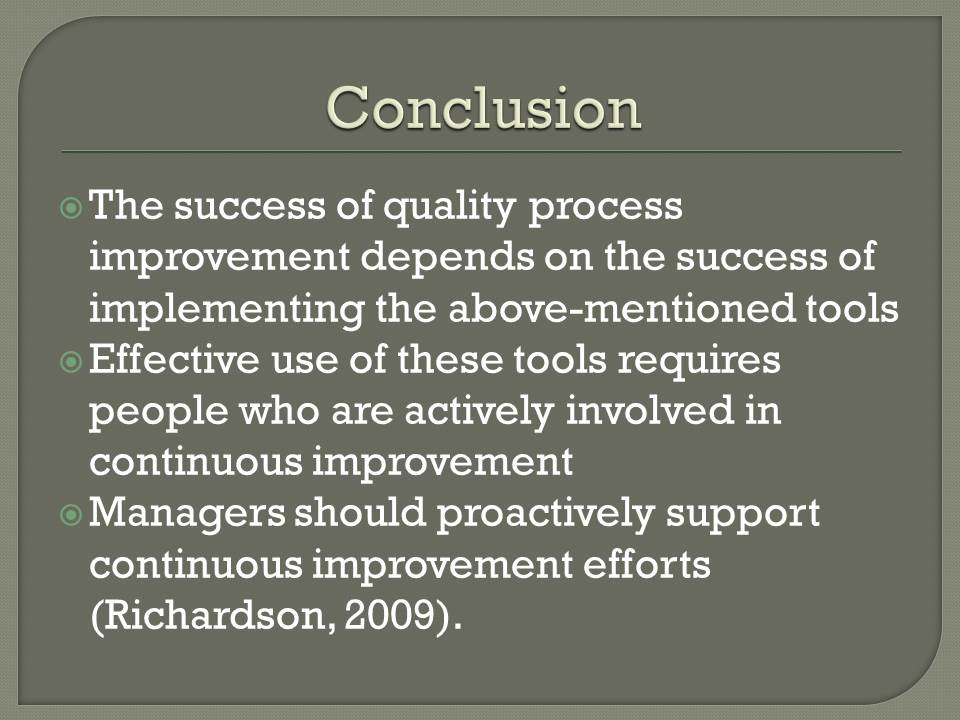
References
DTI. (2015). Tools & Techniques for Process Improvement. Web.
iSixSigma. (2016). What Is Six Sigma? Web.
PMV. (2012). Process Improvement: Six Sigma & Kaizen Methodologies. Web.
Richardson, C. (2009). Three Lean Strategies For Business Process Improvement. Web.
Rocha-Luna, L., Garza-Reyes, J.A., & Kumar, V. (2013). Building quality management systems: Selecting the right methods and tools. Boca Raton, FL: CRC Press
TechTarget. (2016). Kaizen (or continuous improvement). Web.